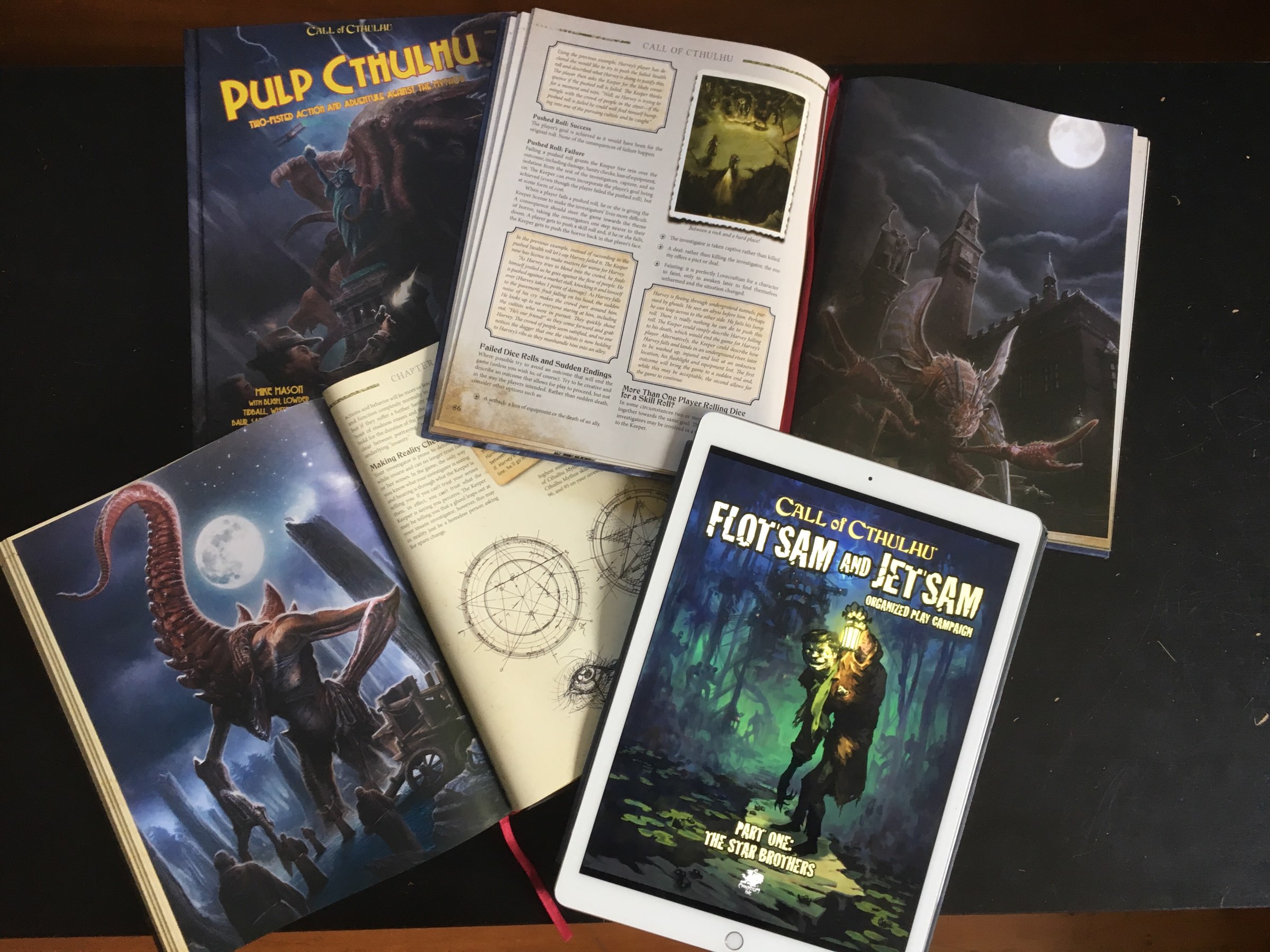Critical Role does Call of Cthulhu
I finally got the time to watch Call of Cthulhu: Shadow of the Crystal Palace, the one-shot adventure by the Critical Role folks.
I think the most impressive thing about this video is that the “critters” community (fans of the main Critical Role shows) is so big and dedicated that after the video aired, they basically flooded the Chaosium website to order the Call of Cthulhu Starter Set en masse. This caused… chaos at Chaosium (yes, I went there), to the point that they issues two apologies (with the second providing coupons to customers affected by delays). Oh well, the good thing is that D&D players are getting interested in horror gaming!
Back to the actual video, I think good points include:
- Production values are through the roof as usual with Critical Role – from the costumes to the set decor (especially shadow displays) and the props, which it seems Taliesin had a lot of fun with.
- There was some good roleplay overall, and it’s always nice to see how involved everybody always is with the action.
Some bad points:
- I don’t see the point of avoid HPL’s name while mentioning his bigotry. People who don’t know him won’t know who you’re talking about, and people who get the Call of Cthulhu books will see his face and name within the first couple pages anyway. Might as well clearly state who that horrible person was.
- There was a lot of fumbling around the rules. It felt like only Ashly had properly read the Quick Start rules. Interestingly enough, almost everybody was reverting to D&D-isms all the time… I wonder how long it takes die-hard D&D players to get used to other systems.
Overall, I really hope they do another game!

